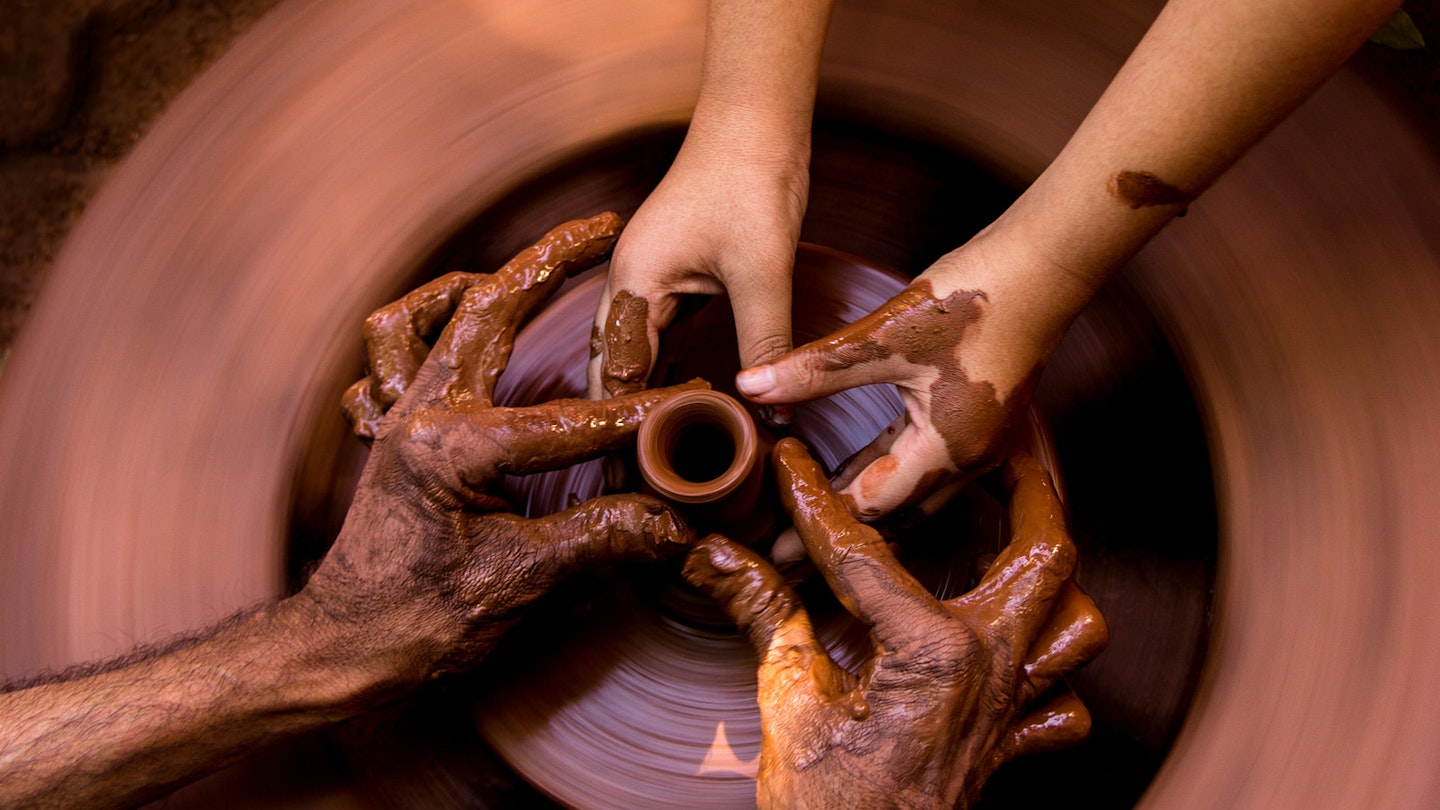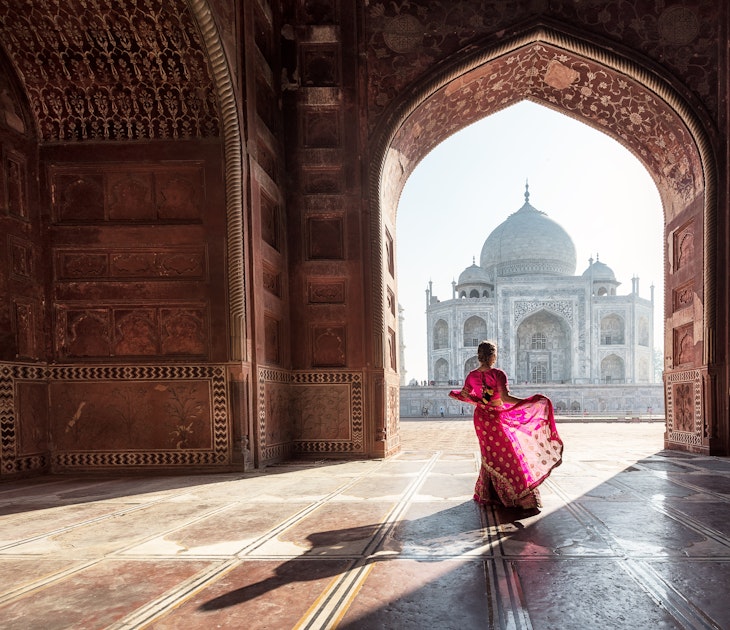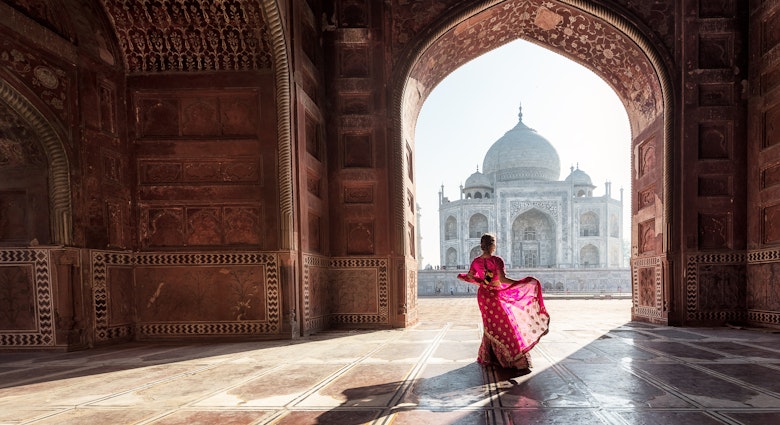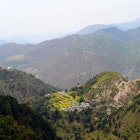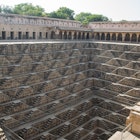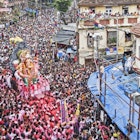In India, the lavish decoration of everyday objects is a national obsession. Making the mundane magnificent is an expression of joy and an antidote to life’s often harsh realities, and even India’s highway trucks are painted in furiously brilliant colours. Is there any other country where arts and crafts are so ubiquitous?

Using skills that are passed on through generations, India’s artisans create objects of incredible, colour-charged beauty, from elaborately painted depictions of village life from the Mithila region of Bihar, to the otherworldly intricacy of embroidery from Gujarat.
And you don’t just have to observe. Travellers can learn some of these skills from local masters all over India, with everything from brief demonstrations to long-term courses in ancient art forms led by expert craftspeople. It’s not just about trying to learn something: in the process, you may also gain some life-changing insights into the immutable processes that make India tick.

Learning with the potters of Mumbai
My own journey into Indian arts and crafts began in the Dharavi slum, one of the world’s largest shanty towns, which sprawls across the northern suburbs of Mumbai, providing a home for more than 700,000 people. Led by Naynish, a local resident and my expert guide, I ducked past an apartment block with a mural of bubble-blowing teenager spanning four of its five storeys, and struggled across lanes of traffic that were moving so fast I had to shadow Naynish like a ninja.
Reality Tours & Travel has become the most respected agency offering tours around Dharavi, investing 80% of its profits back into educational programmes for residents of the bustee (the Hindi word for slum, derived from the Sanskrit term for a village dwelling). Some tours focus on street art, cooking and day-to-day life, but I was here to learn pot-throwing in Kumbharava, Dharavi’s thriving pottery colony, home and workplace to more than a hundred families.
The pottery colony occupied one of the oldest areas of the slum. The narrow lanes, only just big enough for two people to pass each other, were hemmed in by precariously stacked two- and three-storey structures. Peering into doorways as I walked, I glimpsed tailors, crammed between rainbows of cloth, and tiny grocery counters piled with dusty produce, before reaching the edge of the pottery quarter.

A model of efficiency
I immediately noticed how work was divided into discrete tasks in the potters’ enclave, like a Henry Ford production line transplanted to the chaotic setting of urban India. Mixing the clay, which is carried here from outside the city, was the first step of the process. Peeking into a courtyard, I saw a huge pile of clay dust and a man in a red baseball cap mixing it with water using his bare feet.
Naynish led me on to one of the larger pottery businesses, whose workshop was piled with great lumps of clay – twisted, soft and pliable. Beyond were shelves stacked with pots, and lines of potters, wheels spinning and hands stained red with clay.
We crossed the part of the colony where the kilns were lit. Smoke billowed into the streets and everyone hurried through, covering their faces against the coal fumes. The final stage of the process was decoration, and I passed a woman rapidly applying golden paint to hundreds of oil lamps. Beyond were piles of boxes for the finished product, as brightly packaged as Indian sweets, glittering gold, red, pink, green and silver.

Getting hands on
Now it was time to learn some of these skills for myself. I was introduced to the potter, Abhraim Yousiuf, a middle-aged man in a dust-covered T-shirt and shorts. Abhraim started working as a potter when he was 13, around 35 years ago, and his hands showed the experience of a lifetime in the craft.
We hunkered down on low stools and he demonstrated first how to throw the lump of clay onto the centre of the potters’ wheel. I found this the hardest part. A slight miscalculation would place the pot off-centre, making it tricky to get the sides symmetrical. But having mastered this tricky first step, I soon got the hang of narrowing the sides of the whirling pot using my fingers.
I watched intently as Abhraim took a string and gently tapped it along the side of the spinning pot to form a perfect pattern. Simple. But when it was my turn, I stretched the pot out into a wobbling tower, as unstable and wonky as a wave. But Abhraim stepped in to correct the pot and walked me through the string technique. Eventually, I was able to mark the rim of the pot and complete the design with a serrated edge.
With some further guidance I managed to throw a complete pot on my own, but this trip was only partly about a beginner’s introduction to learning the craft. In my time in the potters’ quarter, I feel I gained some real understanding of the work of this efficient enclave, where every individual is a master of their own part of the process, and the act of throwing a pot has changed little for hundreds of years.
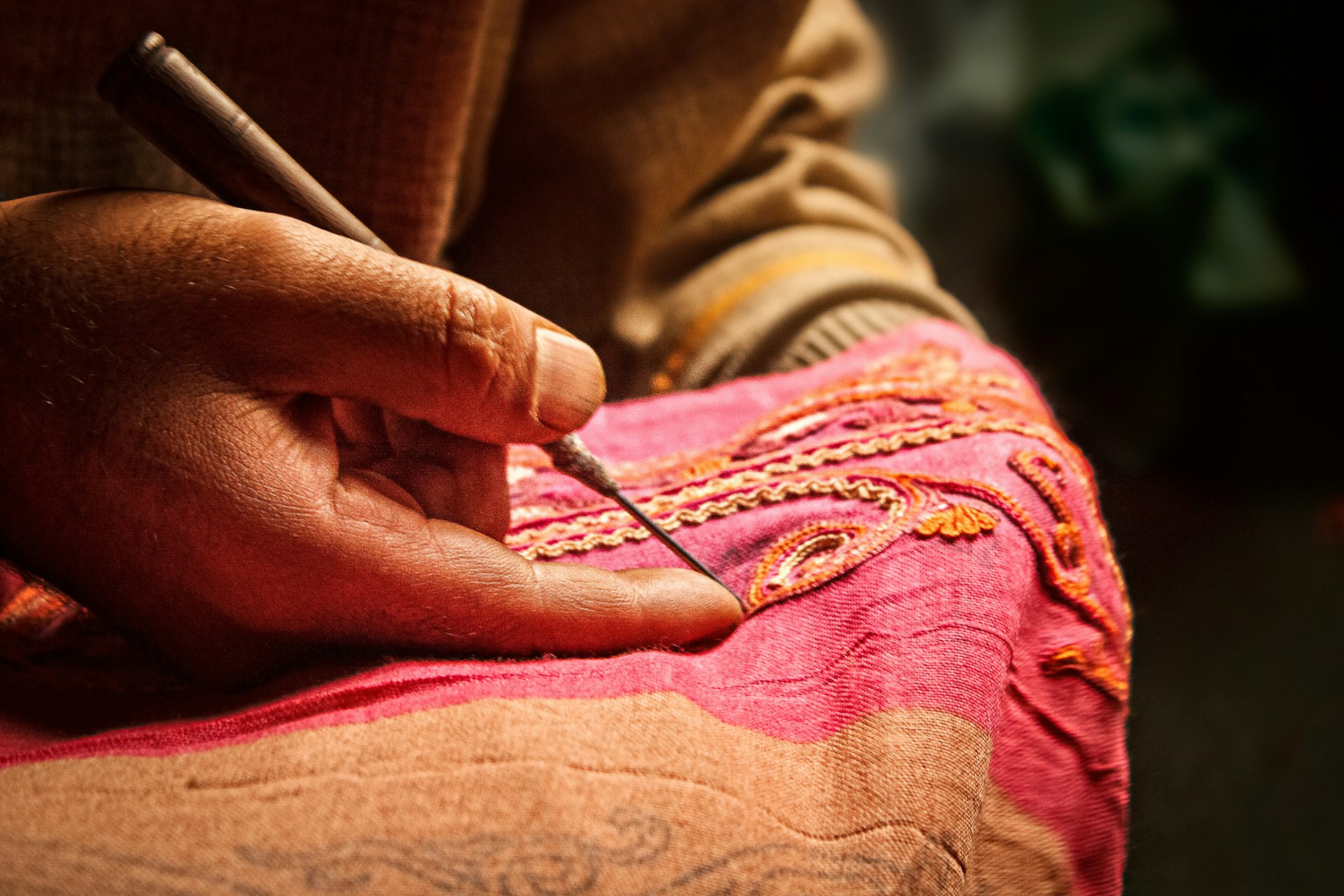
Other ways to get crafty in India
Learning pottery in Mumbai is just one of dozens of ways that travellers can get involved in the thriving arts and crafts scene in India. Here is our pick of some of the great arty endeavours on offer in this creative nation.
Stitch a masterpiece in Chennai
Indian embroidery is famous the world over thanks to the intricacy and exuberance of its designs. In Alwarpet in central Chennai, Mridula's School of Embroidery & Fashion Design offers training in all styles of Indian embroidery, including aari chain-stitching and zardozi embroidery with gold and silver threads, with courses lasting from two to four months.
Learn kalamkari in Chennai
The creation of intricate, block-printed and hand-painted kalamkari designs is most famously associated with Telangana and Andhra Pradesh, but the best place to get involved is in Chennai. In the south of the city, Kalakshetra Foundation offers one- to two-month courses in this refined art form that will walk you through the 23 steps involved in the creation of elegant kamalkari designs.

Block-printing in Sanganer and Amber
Sanganer, a suburb of Jaipur in Rajasthan, is a famous centre for the production of block-printed fabrics, which have been produced using hand-carved wooden blocks since at least the 12th century in India. Around 16km from the centre of Jaipur, Sakshi offers block-printing courses lasting from half a day to two months, which will introduce you to the skills required to practice this ancient art.
You can also try block-printing at the fascinating Anokhi Museum of Handprinting in Amber, which also has beautifully presented displays about the different stages of printing.
For a deeper immersion, try the recommended Wabisabi Project in Bagru, close to Sanganer, which offers one- to seven-day courses in block-printing using hand-prepared natural dyes including madder root and indigo. You’ll create your own scarf on the shortest course, but longer courses can be tailored to create any kind of clothing or fabric.

Miniature painting in Rajasthan
With its fantastical forts and palaces, and brilliant-hued blue, pink and white cities, the desert state of Rajasthan is the living embodiment of the scenes depicted in Mughal miniature paintings. At Ashoka Arts, housed in a haveli-style hotel in the white city of Udaipur, you can learn the art of miniature painting from a master, creating your own pocket-sized masterpiece in around three hours.
Blue pottery in Jaipur
As well as block-printing, Sanganer is a hub for production of Jaipur’s famous ‘blue pottery’, ceramics decorated with birds and flowers in distinctive shades of blue and mustard yellow. Blue-pottery courses, lasting from half a day to two months, are offered at Sakshi in Sanganer and Claybotik, a studio running workshops for adults and children in Jaipur city.
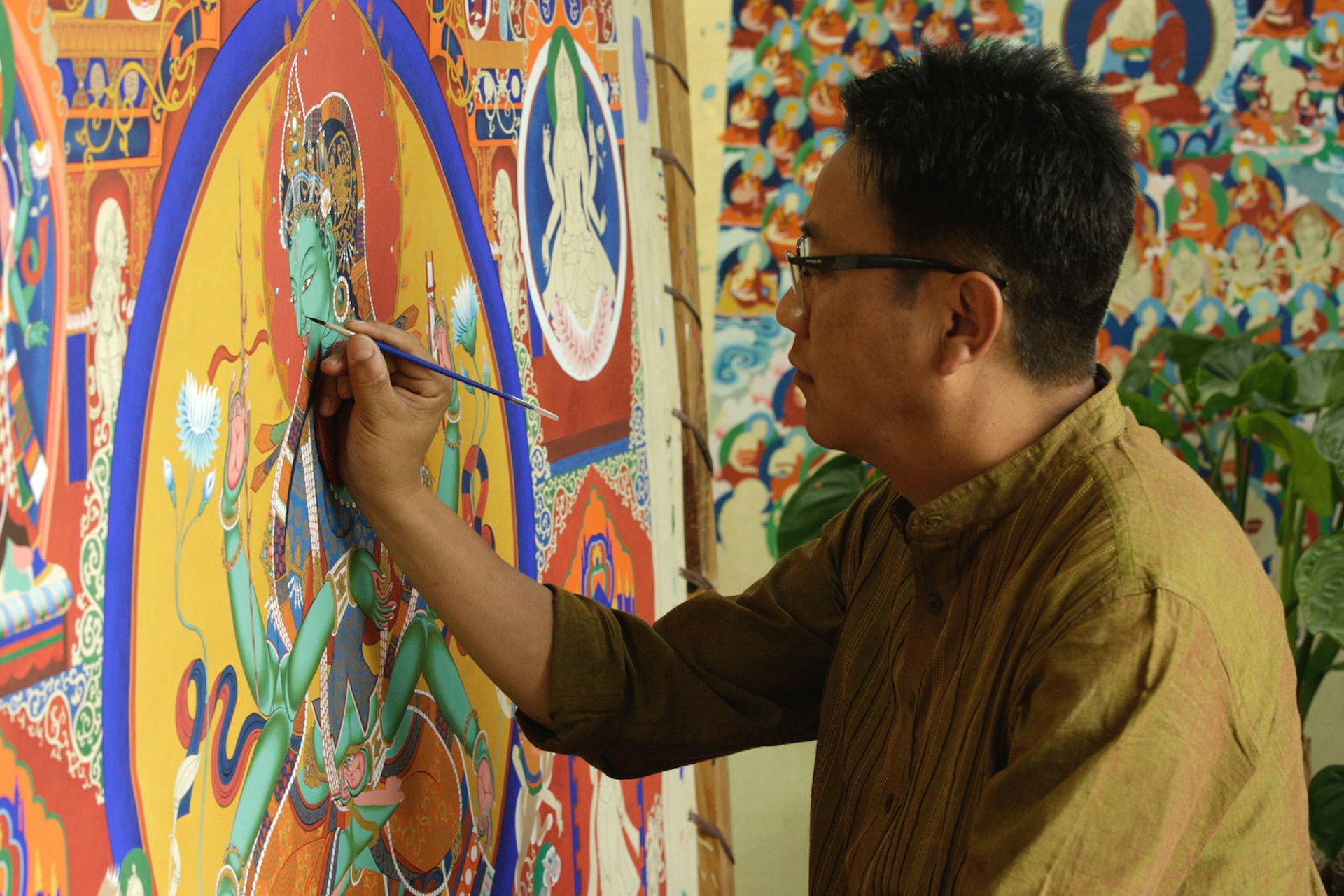
Paint thangkas in Dharamasala
Brought to India by Buddhists from Tibet, thangka paintings depict Buddhist subjects on a silk or cotton base, with precise layout and geometry dictated by strict religious principles. For those hoping to make a living from thangka painting, the basic training takes six to 10 years, with around 30 years of training required to become a master.
If you don’t have this amount of time to spare, you can learn the basics on a short course in Dharamsala, home to the Tibetan government in exile. The Centre for Living Buddhist Art offers courses lasting from one to 16 weeks and costing US$40 to US$50 per day, where you’ll learn the core elements that go into depictions of the Buddha, Avalokiteshvara, White Tara and other Tibetan Buddhist deities.
Arty Mumbai
Classes in the pottery colony in Dharavi arranged through Reality Tours & Travel are just one of the options in Mumbai. There are also regular workshops in various crafts at Mumbai’s lovely Dr Bhau Daji Lad Mumbai City Museum, which is packed with displays of virtuoso arts and crafts from across India. The programme covers everything from miniature painting to kite-making and classes in creating the intricate rangoli designs that decorate the ground in front of South Indian homes during religious festivals.
https://shop.lonelyplanet.com/products/india-travel-guide-17

